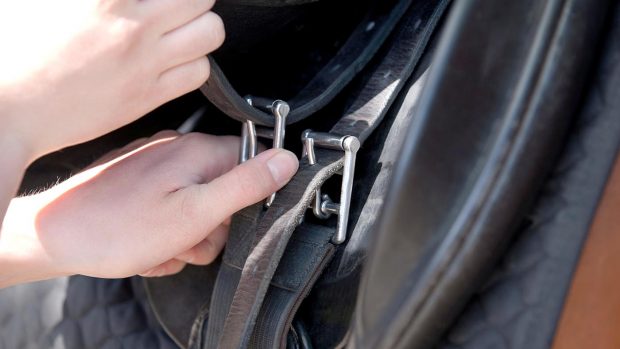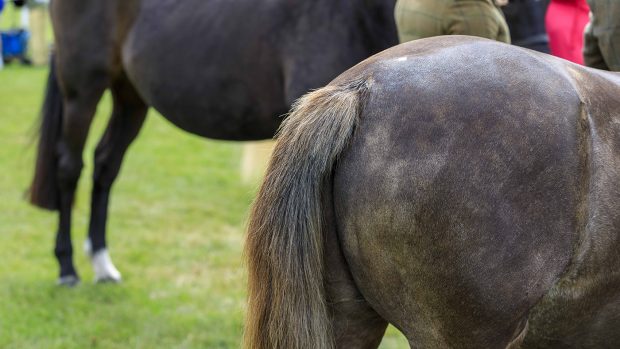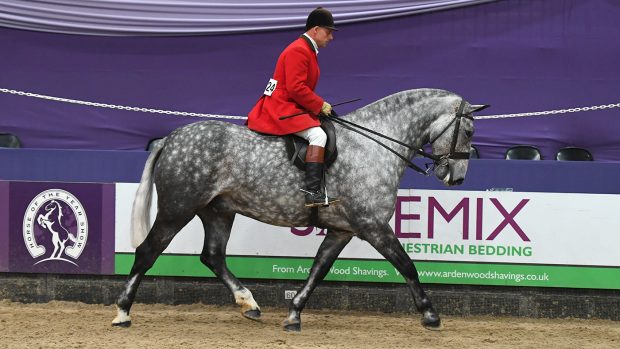Owners of horses who seem to get fat on fresh air may find feeding good doers who live out year-round a real challenge as they try to balance providing sufficient nutrition to cover their essential requirements for good health, without seeing their waistline expand.
Obesity in horses is a huge problem as it is a real risk to health, with weight-related problems including increased stress placed on limbs and joints, a higher risk of heart disease, circulation problems, digestive disorders and decreased resistance to disease, as well as increasing the likelihood of laminitis occuring.
So if you own a horse or pony who is a good doer, what steps can you take to ensure they achieve a healthy weight and then maintain it? The good news is that winter is a great opportunity for these horses to lose weight as nature intended.
Assuming there are no underlying health conditions leading the horse to become overweight, the most common cause is that the horse is taking on more energy in the form of calories than they are using in exercise, which results in the excess energy being stored as fat.
One of the first things to look at when considering feeding good doers is the quality of your horse’s grazing. This is going to be the primary food source for any horse living out 24/7. If you have a horse that tends to carry too much weight, then this is likely to be the root of the problem, particularly if the horse is in a large field of good quality grass.
While the nutritional value of grass will reduce during the winter months, a field of well-fertilised grazing, such as that produced by farmers for cattle, will still contain a high level of calories for horses to consume.
So how can you reduce the calories from grass that your horse has access to when feeding good doers? Equine nutritionist Christine Smy suggests:
- Consider the size of your horse’s field – is there a smaller field available?
- If not, could you use electric fencing to strip graze instead?
- Is it possible to introduce sheep on to the land to eat down the grass, so there is less of it for your good doer to munch on?
- If none of the above are possible, you may need to consider using a grazing muzzle to restrict the amount of grass your horse can eat
- If you run short of grass in the winter – or there is snow on the ground – then additional forage will need to be supplied, but try to feed hay that has been a late cut if possible, as this typically has a lower nutritional value
- Another option is to mix hay with quality oat straw up to a 50:50 ratio to reduce the calories while maintaining plenty of roughage. NB: If you do this keep an eye on the horse’s droppings to ensure their digestive system is managing to move the less digestible forage through efficiently, as there may be a higher risk of impaction colic.
It’s important that horses living out full-time are getting all the key nutrients needed to maintain good health. Having your hay analysed to check its feed value will help you to ensure your horse is receiving a well-balanced diet. In terms of bucket feed, a feed balancer designed for good-doers will provide all your horse needs with minimal calories.
Other considerations when feeding good-doers
If your horse is living out wearing a rug during the winter, it is important to regularly remove the rug to check their physical condition, as well as to allow their skin the chance to breathe and to check for any rubs or injuries that may have occurred. This is particularly important if you’re not riding regularly.
However, ask yourself if your horse really needs a rug? Many native types living out unclipped are able to cope with the worst of the British weather and are likely to be more comfortable without rugs if there is sufficient shelter — either natural or man-made — to allow them to escape from the wind. If you need your horse to lose weight then no rug will allow the horse to use its natural internal warming system to maintain its body temperature, which in turn will help burn the calories it would otherwise lay down as fat.
If your horse has a thick winter coat, it may be difficult to assess their condition by eye, so it’s recommended to get hands-on to assess their body condition score, combined with weekly use of a weight tape, to monitor weight loss or gain. Use the tape weekly at the same time of day and keep a note of the measurements. A gradual weight loss is, as it is in humans, more desirable than losing a lot of weight quickly.
Exercise is a key element of ensuring your horse loses weight. If you are unable to exercise your horse during the winter months, due to limited daylight or other restrictions, then consider the layout of your turnout to encourage the horse to move more. Track systems are becoming increasingly popular as they encouraging the horse to move naturally between areas where they can eat, drink and relax, which can aid weight loss.
You may also be interested in…

How to calculate your horse’s body condition score – is he the right weight?

Grazing muzzles – what are your options?

Feed balancers: what’s on the market?

Subscribe to Horse & Hound this spring for great savings
Horse & Hound magazine, out every Thursday, is packed with all the latest news and reports, as well as interviews, specials, nostalgia, vet and training advice. Find how you can enjoy the magazine delivered to your door every week, plus options to upgrade your subscription to access our online service that brings you breaking news and reports as well as other benefits.





